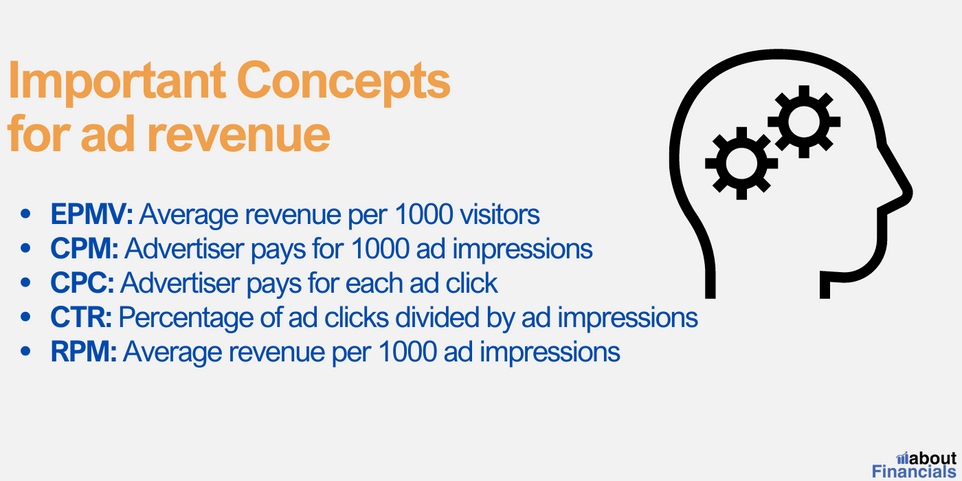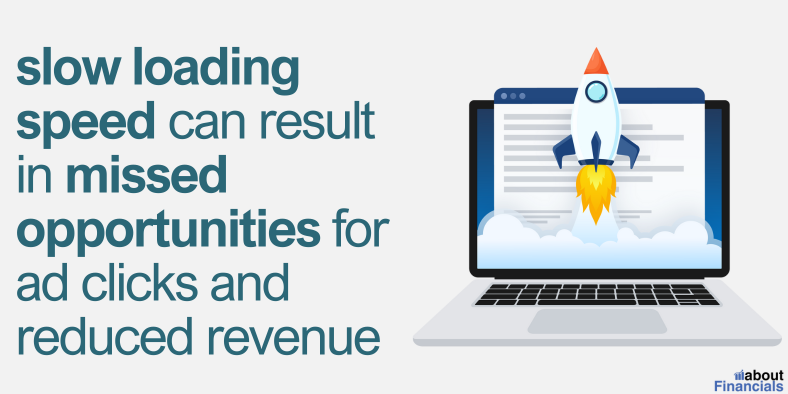Whether you’re just starting your blogging journey or looking to boost your current ad revenue, Ezoic earning calculator will help you to estimate you blog’s profitability.
Online publishers and website owners face the challenge of maximizing their ad revenue while maintaining a positive user experience.
This is where Ezoic, an AI-driven ad platform, comes into play.
Ezoic is a cutting-edge technology that empowers website owners to optimize their ad placements and increase their earnings through data-driven insights and automated testing.
Ezoic earnings calculator
Calculator
Please note that the above calculator only provides estimated earning potential based on the average EPMV and other variables. The actual revenue may be different.
Commons concepts related to ad revenue

- EPMV (Earnings Per Thousand Visitors):
EPMV represents the average revenue earned for every one thousand visitors to a website. It is calculated by dividing the total ad revenue generated in a specific period by the number of unique visitors (in thousands) during that same period. EPMV is a helpful metric to compare revenue performance across different websites, regardless of their traffic levels.
- CPM (Cost Per Mille):
CPM refers to the cost an advertiser pays for one thousand ad impressions. It is calculated by dividing the total cost of the ad campaign by the number of impressions (in thousands). CPM is a common pricing model for display ads, where advertisers pay for the number of times their ad is shown, irrespective of whether it is clicked or not.
- CPC (Cost Per Click):
CPC is the cost an advertiser pays for each click on their ad. In this pricing model, advertisers only pay when a user clicks on their ad and is directed to the advertiser’s website. CPC is commonly used for search engine advertising and some display ad campaigns.
- CTR (Click-Through Rate):
CTR is the percentage of ad clicks divided by the number of ad impressions. It measures the effectiveness of an ad in enticing users to click on it. A higher CTR generally indicates that the ad is relevant and engaging to the audience. It is calculated by dividing the number of ad clicks by the number of ad impressions, then multiplying by 100 to get the percentage.
- RPM (Revenue Per Mille):
RPM is similar to EPMV but is commonly used by publishers and ad networks to represent the average revenue earned per one thousand ad impressions. It is calculated by dividing the total ad revenue by the number of ad impressions (in thousands) and is often used to analyze ad performance on a per-impression basis.
How ad revenue is generated
Ad revenue is the income generated from displaying advertisements on your blog. Advertisers pay you, the publisher, for the space on your blog to reach your audience. The amount you earn depends on various factors, including the ad format, ad placement, the number of visitors, and the level of engagement your blog receives.
Display Ads
Display ads are graphic or text-based advertisements that are placed on your blog. These ads are usually provided by ad networks like Google AdSense, Media.net, or Ezoic. They are easy to implement and can be customized to match your blog’s design. Display ads can generate revenue through CPC or CPM models.
Native Ads
Native ads blend in with the overall content of your blog, making them less intrusive and more likely to be viewed by readers. They mimic the style and format of your blog posts, enhancing user experience while delivering valuable content to readers. Native ads can be highly effective, but it’s essential to maintain transparency and clearly label them as sponsored content.
Important factors for maximizing ad revenue
High-quality content creation

Your readers visit your blog to find valuable information, insights, and solutions to their problems. By consistently delivering high-quality, informative, and engaging content, you can attract and retain a loyal audience. A satisfied and engaged readership is more likely to interact with your ads and support your blog’s growth.
Regular updates
Regularly updating your blog with fresh content keeps your readers coming back for more. Search engines also favor frequently updated websites, which can positively impact your blog’s search engine rankings.
Optimal ad placement
The placement of ads on your blog significantly affects their performance. Placing ads above the fold (visible without scrolling) often garners more attention and clicks. Experiment with different ad positions to find the optimal layout that maximizes user engagement while maintaining a balance with your content.
Avoiding ad ads clutter

While ad revenue is essential, bombarding your readers with too many ads can lead to a negative user experience and a higher bounce rate. Opt for a clean and organized layout that complements your content without overwhelming your visitors with ads. A clutter-free design enhances user satisfaction and encourages prolonged engagement.
Mobile optimization
With an increasing number of readers accessing blogs through mobile devices, it’s crucial to optimize your ads for mobile users. Mobile-friendly ad placement ensures that ads are displayed appropriately on smaller screens, enhancing user experience and increasing the likelihood of ad engagement.
Adopting a responsive web design ensures that your blog adapts seamlessly to various screen sizes and devices.
Website speed and performance

Slow-loading pages can lead to higher bounce rates, as impatient users are more likely to leave your blog before ads have a chance to load or be viewed. This can result in missed opportunities for ad clicks and reduced revenue.
To enhance website speed and performance, consider implementing the following practices:
- Compress images without compromising quality to reduce page load times.
- Reduce the number of elements (e.g., scripts, CSS, images) that require separate server requests to speed up page loading.
- Opt for a hosting service that offers robust server resources and ensures consistent website performance.
Prioritizing user experience
While maximizing ad revenue is essential, it should never come at the expense of user experience. Ensure that your ads complement your content and do not overwhelm or disrupt the reading experience. A positive user experience encourages repeat visits and fosters loyalty among your readers.
Track key performance metrics
Utilize tools like Google Analytics and ad network dashboards to monitor key metrics, such as click-through rates, impressions, conversion rates, and revenue generated by each ad. Regularly analyze this data to identify trends and areas for improvement.
Final thoughts
Always prioritize your readers’ experience. A positive user experience not only leads to higher engagement with ads but also fosters brand loyalty and word-of-mouth promotion.
With the right blend of content quality, strategic ad placements, audience engagement, and continuous improvement, you can establish your blog as a trusted resource.
Best of luck with your blog and may it continue to thrive and make a positive impact in the lives of your readers. Happy blogging!

